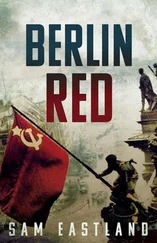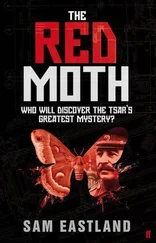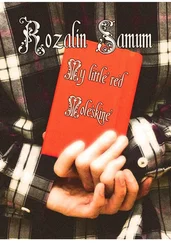Sam Eastland - Red Icon
Здесь есть возможность читать онлайн «Sam Eastland - Red Icon» весь текст электронной книги совершенно бесплатно (целиком полную версию без сокращений). В некоторых случаях можно слушать аудио, скачать через торрент в формате fb2 и присутствует краткое содержание. Год выпуска: 2014, ISBN: 2014, Издательство: Faber & Faber, Жанр: Исторический детектив, на английском языке. Описание произведения, (предисловие) а так же отзывы посетителей доступны на портале библиотеки ЛибКат.
- Название:Red Icon
- Автор:
- Издательство:Faber & Faber
- Жанр:
- Год:2014
- ISBN:9780571312313
- Рейтинг книги:3 / 5. Голосов: 1
-
Избранное:Добавить в избранное
- Отзывы:
-
Ваша оценка:
- 60
- 1
- 2
- 3
- 4
- 5
Red Icon: краткое содержание, описание и аннотация
Предлагаем к чтению аннотацию, описание, краткое содержание или предисловие (зависит от того, что написал сам автор книги «Red Icon»). Если вы не нашли необходимую информацию о книге — напишите в комментариях, мы постараемся отыскать её.
Red Icon — читать онлайн бесплатно полную книгу (весь текст) целиком
Ниже представлен текст книги, разбитый по страницам. Система сохранения места последней прочитанной страницы, позволяет с удобством читать онлайн бесплатно книгу «Red Icon», без необходимости каждый раз заново искать на чём Вы остановились. Поставьте закладку, и сможете в любой момент перейти на страницу, на которой закончили чтение.
Интервал:
Закладка:
Ever since the Tsar had picked him out of a group of military cadets, newly arrived from Finland, which at that time was still a colony of Russia, Pekkala had been trained for one task only – to be the Tsar’s personal investigator, answerable to Nicholas II alone, and with no rank or badge of service other than a gold medallion, as wide across as the length of his little finger. Across the centre was a stripe of white enamel inlay, which began at a point, widened until it took up half the disc and narrowed again to a point on the other side. Embedded in the middle of the white enamel was a large, round emerald. Together, the white enamel, the gold and the emerald formed the unmistakable shape of an eye. And it was from this that Pekkala had earned the name by which he was now known across the length and breadth of Russia – the Emerald Eye.
Pekkala shifted uncomfortably in his heavy boots, rocking slowly back and forth from his heels to the balls of his feet. The leather creaked with a sound that reminded him of a wooden boat rolling with the tide. Although the windows had been opened, there was no breeze but that which slithered from the rooftops of St Petersburg, heated on the snake-like scales of slate until it felt like the breath of an oven. Inside hung rows of golden chandeliers, each one of which could burn more than a hundred candles simultaneously. At winter gatherings, these chandeliers would fill the hall with soft light and the soothing smell of beeswax. But now they were extinguished and their presence seemed more menacing, suspended above the bowed and unprotected heads as if they were the blades of guillotines.
Nobody spoke. The only sound came from the clearing of parched throats and the involuntary sighs of those who wondered how long they could last without fainting in a heap upon the polished marble floor.
At the far end of the hall, on a platform raised waist high above the crowd and reached by a series of long, shallow and difficult-to-negotiate steps, knelt the Tsar. He wore a white military tunic and dark trousers tucked into knee-length boots.
Normally, he would have been facing the gathered assembly of dignitaries, seated on a red-and-gold throne, which was sheltered from above by a red velvet canopy, trimmed with yellow brocade and embroidered in gold bullion thread with the double-headed eagle of the Romanovs. On this occasion, however, the throne had been put to one side, making way for a wooden easel as tall as a man and covered with several layers of gold paint, on which rested a small, but vividly painted icon known simply as The Shepherd .
The painting showed a man in a white robe, standing beside a large stone. Leaning up against the stone was a stylised version of a shepherd’s crook. The man stood at the edge of a lake, on which there were many small islands, all of them crowded with sheep.
Set against the hall’s bewildering array of pillars, and the thousands of embellishments growing like moss from every corner, the icon appeared almost too crude to have deserved such a place of honour in the room. Only those who knew its history could understand the reason why the Tsar of all the Russias knelt before it.
The icon had been painted by an unknown artist in Constantinople, sometime in the eleventh century. From there, it had been carried by Crusaders to the city of Kazan, where it was placed for safekeeping in a monastery. In the year 1209, Kazan was overrun by the Tartars, who held it for the next 350 years. It was during this time that The Shepherd disappeared and, for generations afterwards, was presumed to have been destroyed. In 1579, as a fire raged across the city, many of Kazan’s inhabitants were forced to flee into the surrounding countryside. According to legend, a boy named Nestor, whose family had joined this flood of refugees, received a vision. Jesus appeared before him, wearing the robe of a shepherd, and ordered the boy to return to the house they had recently abandoned. There, the vision told him, something of great value had been hidden. He appealed to his parents, who refused to help, knowing that by now their home had been reduced to ashes. The next night, the vision appeared again. Once more Nestor begged his parents to return and for a second time they refused. When the vision appeared a third time, the parents finally relented. They retraced their steps to the smouldering remains of what had been their house, where, beneath the charred floorboards of his room, Nestor discovered the icon, wrapped in oilcloth and undamaged by the flames.
The following year, the family entrusted The Shepherd to Tsar Ivan IV, known as ‘Ivan the Terrible’, who promised that he, and those who came after him, would keep it safe for all eternity. From then on, the icon was established as the spiritual guardian of the Tsars. Jealously guarded by generations of rulers, it was eventually brought to a secret chamber in the Church of the Resurrection, private chapel of the Tsars on their summer estate at Tsarskoye Selo, just outside St Petersburg. Only in moments of supreme importance was The Shepherd brought out from its hiding place and shown to the people of Russia as proof of God’s blessing upon the Tsar and his safeguarding of the country.
Now the Tsar rose slowly to his feet. His face was flushed and, for the first time, the others who waited in the hall could see that he too was suffering in this oppressive August heat.
Unsteadily, he walked down the steps to the floor of the hall, where he was joined by his wife of twenty years, the Tsarina Alexandra, formerly the Grand Duchess of the German State of Hesse, against whose native country Russia was about to declare war. She wore a floor-length dress made of a wispy, off-white fabric, with a white ruffled shirt that covered her entire neck. Her wide-brimmed hat was decorated at the front with a spray of feathers and she carried a white parasol in her right hand. For a moment, their hands touched, his right against her left, and then the Tsar reached into the pocket of his tunic and withdrew a neatly folded sheet of paper.
The silence in the room grew more intense. The crowd watched, leaning forward so as not to miss a word of what was spoken. Even the faint, persistent rhythm of their breathing had been hushed.
The paper trembled in the Tsar’s hand as he began to read.
There was no mystery to what he had to say. Those who had filed into the hall two hours before to await the arrival of the Romanovs could have guessed, some of them syllable for syllable, the exact words the Tsar would use to unleash the Russian war machine upon Germany and the crumbling Habsburg Empire.
Barely a month before, on 28 June, a sickly-looking, narrow-shouldered man named Gavrilo Princip had stepped up on to the running board of a Model 1911 Graf amp; Stift Double Phaeton saloon transporting the Austrian Archduke Franz Ferdinand, and fired a bullet into his neck, severing the jugular vein, before putting another bullet into his wife, Sophie, Duchess of Hohenberg. In the last seconds of his life, Ferdinand turned to her and, with blood pouring from his mouth on to his powder-blue tunic, begged her not to die. But it was already too late for the Duchess, and the Archduke himself perished before he reached the hospital.
Princip had been part of a small group of anarchists in Serbia who called themselves the Black Hand and had sworn to strike at the Habsburgs on behalf of their Bosnian brothers, whose country had long ago been swallowed up by Austro-Hungarians. They chose, as the date of their attack, the anniversary of Bosnia’s inclusion in the Empire and, as their target, the man who had been sent there to commemorate the day.
Armed with hand grenades and Browning automatic pistols supplied to them by a Serbian Intelligence officer, Dragutin Dimitrijevic, who went by the code name ‘Apis’, members of the Black Hand stationed themselves along the route that had been planned for the Archduke’s tour of Sarajevo.
Читать дальшеИнтервал:
Закладка:
Похожие книги на «Red Icon»
Представляем Вашему вниманию похожие книги на «Red Icon» списком для выбора. Мы отобрали схожую по названию и смыслу литературу в надежде предоставить читателям больше вариантов отыскать новые, интересные, ещё непрочитанные произведения.
Обсуждение, отзывы о книге «Red Icon» и просто собственные мнения читателей. Оставьте ваши комментарии, напишите, что Вы думаете о произведении, его смысле или главных героях. Укажите что конкретно понравилось, а что нет, и почему Вы так считаете.










